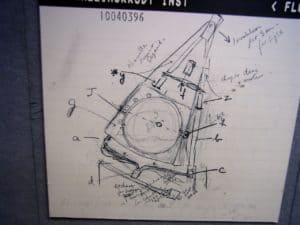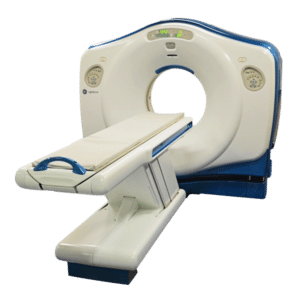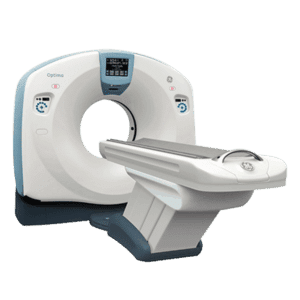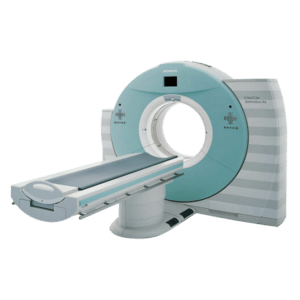Sir Godfrey Hounsfield, one of the medical industries greatest minds and the inventor of the CT Scanner
This past weekend marked the death of Sir Godfrey Hounsfield, one of the medical industries greatest minds and the inventor of the CT Scanner.
Born on August 28, 1919 in Nottinghamshire, England, Hounsfield grew up enjoying the ‘freedom of a rather isolated country life.’ His five siblings were much older and so Godfrey was able to explore the farm on his own, tinkering with mechanical and electrical gadgets that the farm held in abundance. Hounsfield enjoyed the threshing machines, the binders, and the generators found on the farm, and especially relished his childhood memories between the ages of 11 and 18, because those years included his first attempts at experimentation.

Hounsfield made electrical recording machines, investigated the principles of flight by launching himself from the tops of haystacks with a home-made glider; and one time nearly blew himself up during an experiment using water-filled tar barrels and acetylene to see how high they could be water jet propelled. During this time he attended the Magnus Grammar School in Newark-On-Trent, excelling in physics and arithmetic.
Right before World War II, Hounsfield joined the Royal Air Force as a volunteer reservist due to his interest in airplanes. Hounsfield quickly climbed the ranks, learning the basics of electronics and radar, and after taking a trade test, was immediately taken on as a Radar Mechanic Instructor at the RAF occupied Royal College of Science in South Kensington, and later to Cranwell Radar School.
After the war, Hounsfield’s accomplishments in school, including being awarded a Certificate of Merit at Cranwell, were admired by Air Vide-Marshal Cassidy and were crucial to his obtaining a grant which enabled him to attend Faraday House Electrical Engineering College in London.
He received his diploma from Faraday House and joined the staff of EMI, Ltd. in Hayes, Middlesex in 1949. There, he researched guided weapon systems along with radar and later ran a small design lab.
Computers were soon another interest held by Hounsfield, and by 1958 he began leading a design team building the first all transistor computer constructed in Britain, the EMIDEC1100.
Afterwards, Hounsfield transferred to EMI Central Research Laboratories. One of his first projects, designing a one million word immediate access thin film computer store, did not come to fruition and was soon abandoned. Hounsfield then went for an outing in the country, in order to clear his head, during which he began thinking of new areas of research to dive into. This is when the idea struck him that eventually became the base for the computed tomography scanner: that one could determine what was inside a box by taking X-ray readings at all angles around the object, to create an image of the object in “slices.”
Get Started
Request Pricing Today!
We’re here to help! Simply fill out the form to tell us a bit about your project. We’ll contact you to set up a conversation so we can discuss how we can best meet your needs. Thank you for considering us!
Great support & services
Save time and energy
Peace of mind
Risk reduction
Hounsfield himself said that “as might be expected, the programme involved many frustrations, occasional awareness of achievement when particular technical hurdles were overcome, and some amusing incidents, not least the experiences of travelling across London by public transport carrying bullock’s brains for use in evaluation of an experimental scanner rig in the Laboratories.”
In addition to the cow brain, Hounsfield tested a preserved human brain and later himself on his built CT scanner prototype. Four original prototypes and five progressively more sophisticated prototypes of brain and whole body scanners were created, and in October of 1971, CT scanning was introduced into the medical world with a successful scan on a cerebral cyst patient in London. Whole body scanning was introduced in 1975.
For his efforts, Hounsfield, along with South African American physicist Allan MacLeod Cormack (who published papers on X-ray technology and the theoretical underpinnings of CT scanning some years before Hounsfield built the CT scanner,) was awarded the Nobel Prize in Physiology or Medicine in 1979. Hounsfield also received other numerous awards in addition to the Nobel Prize; these include being appointed the Commander of the Order of the British Empire in 1976 and being knighted in 1981. He was also elected a Fellow of the Royal Society, awarded the Wilhelm Exner Medal in 1974, and the Howard N. Potts Medal in 1977.
Sir Godfrey Hounsfield died on August 12, 2004 at the age of 84. How incredible it must have been in his last 30 years to witness his creation come to life, becoming one of the medical industries most crucial tools in saving the lives of millions.



